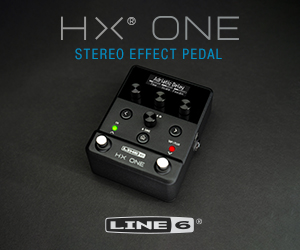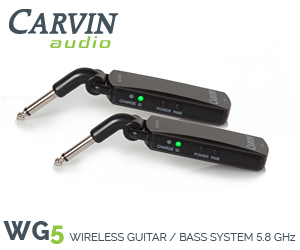Deep Dive: Black Widow MGP-1A
Phil Smith | May 05, 2018 | Comments 0
I’m gonna be honest with you, I’ve been struggling A LOT to write this article. It’s not that I didn’t wanted to write it, nor that the product is not good… So why the struggle?
One of the reasons is that I completely felt in love with this product. So not only it’s not easy to be sure you will see it the way I do, but also I have to double down on my bias to be sure I will be as objective as I can be. So I’ve tried really hard to find my own blindspots… even thought I’m still in the honey moon period.
Therefore I would perfectly understand if some of you would disagree with me at first, but bare with me because I never believed in love at first sight — how could it be? It would be mean that it only comes down to what one can see, only based on the physical appearance and nothing else. Regardless if we talk about relationship or gear, I’m pretty convinced there’s very high probability it would end up being a very deceptive situation. However, when we take time to learn more about it and when we know what we’re looking for, we can end up to find the one and only.
Obviously, I’m not Mr. Love, so I’m not gonna be able to help you in any shape or form for your relationship and/or to help you to find your future beloved one.
However, when it comes to gear, it’s easier — at first, I generally ask myself three main questions:
– How does it look?
– How does it work?
– How does it sound?
You may also use those three questions for your own relationship, but I’ll decline any responsibility…
So let’s go in detail through those three questions and then you might understand why I’m so much in love with this the Black Widow MGP-1A.
How does it look?
Since the Black Widow MGP-1A is a 2U Modeler Guitar Preamp rack, it would be easy to jump to conclusion and compare it with some digital modeler such the Axe-FX, Kemper, Helix, etc… However that would be wrong — from both a technical and workflow point of view — because this a tube preamp rack with full analog signal path from the input to the output. Therefore it would be more accurate to compare the MGP-1A with other tube preamp racks such Soldano X88R, Mesa Boogie Studio Preamp, Bogner Fish, ENGL E570, etc… There’s no menu, sub-menu, pages, tabs, etc… the User Interface is all base in WYSIWYG (What You See Is What You Get). So let’s have a look to the frontpanel:

I already know what you’re probably thinking: “wow, that’s a lot of knobs and buttons”… but if you look carefully it’s not really complicated — The main key here is that it’s a 3 channel preamp with a Clean, a Crunch and a Drive channel that can directly be selected by the elector buttons on the left:

So, it’s no different from other multi-channel amps out there that might have 3, 4 or even 6 channels with a set of knobs for each channels. Here we just have three times the same controls, just like we would have on any three channels amp or preamp such a Marshall JVM, Mesa Mark V, H&K TriAmp, etc… But when we look at each individual channel that is already way simpler to comprehend:

![]()

Of course, like a lot of amp, we have a set of knobs and buttons/switches. If we only pay attention to the knob, we can immediately see the 5 knobs are the basic controls for the Gain, Bass, Mid, Treble and Volume like most of amp:



Now let’s have a look to what else we have?
Pretty straight forward, we have two set of “tonal options” such Bright/Deep on one side, and the EQ Shift and Alternative EQ on the other:
 



Here again, regardless if we go back to the early ‘60s Fender, Marshall or Vox amps, having some “Deep” and “Bright” switches was already a thing back in these days. It generally helps to adjust the kind of tone we want to obtain depending on the type of guitar pickup we use, or depending the pedals in-front of the amp, etc… Boosting some low or high frequencies can help to shape the overall tone. But sometimes we just hope the EQ would be different, would react differently, maybe adjust different frequencies. That’s exactly what the “Alternative EQ” and “EQ Shift” are for. It allows you to change the way the Bass, Mid and Treble knobs will change the overall tone. Note that both features could be use simultaneous to therefore have 4 types of EQ stack per Amp model with each an additional Bright and Deep options.
Also, some amps may have two set of inputs for let’s say a “Normal” channel and then maybe a “Bright” channel. That’s why the Clean channel on the MGP don’t just have a “bright” switch to turn it on/off, but instead have two set of gain (Bright and Normal) that can be use separately or together like when we “jump” them to daisy-channel one input into the other.


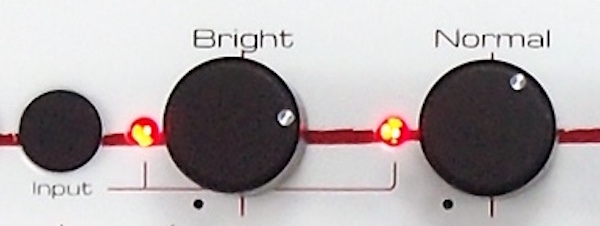
So far, as we saw until now there’s absolutely nothing special or particular that we couldn’t find in any other amp or preamp. Then what makes this Black-Widow so special?
It’s all on a set of 4 little buttons per channel:



The MGP-1A isn’t “just” a preamp with a single circuit and tone… nor “just” three channels. It’s an Analog Modeler that can more than one Preamp model per channel, all based on existing amp. For the Crunch channel as shown here, we can either get the Cali model, the UK800 model or the Citrus Model (pretty easy to guess what amp they’re modelled after, but we will come back on that later). And for each amp model we can have a different Mod version, which means we have quickly access to 3 additional amp models. It makes a total of 6 complete different amp models per channel, which makes a total of 18 different amps in one unit…
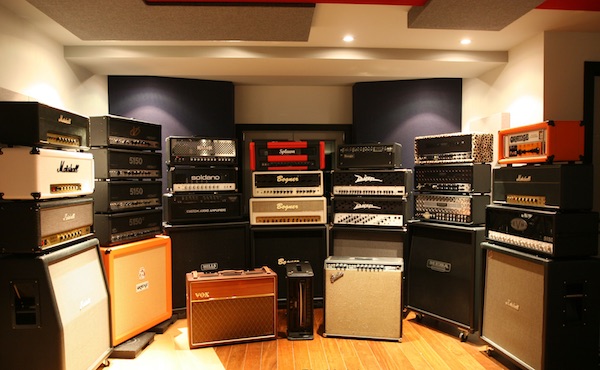
To picture it even better, you could also imagine a fridge-size rack full with 18 different preamp racks from Soldano, Mesa, Engl, Marshall, Fender, Vox, etc… all pure analog and tubes preamps — except that instead of having multiple racks, or different modules to slide in a chassis, etc… you have them all in a single 2U Rack with a way to recall them at any time from the press of the little buttons close to the channel selector. From a layout and workflow point of view that’s actually the only and main big difference, since everything else such 3 channels, knobs, bright/deep and EQ Shift/Alt EQ are pretty much just the same.
That’s it!
So this is not really complicated, you just select the channel (Clean, Crunch or Drive), then you pick your model amongst the 3 model (with or without the Mod) and you would do that even faster that you would do by just inserting your guitar cable in one an amp… and then you’re ready to use it and tweak it with the knobs and tonal switch like you’d do with any other amp.
If you select a specific configuration for a channel, it will conserve its configuration. So if you want let’s say a “Fender Bassman” model for the Clean channel and then you want a “Marshall JCM800” for your Crunch, and then maybe a “Soldano SLO100” for your Drive… you will have nothing else to do later then just selecting the channel from the three selector buttons or from the included floor switch. It would be like bringing 3 different amps on stage except you wouldn’t need any switcher, cable and it would be easier to transport.
However, if you happen to have a midi controller (such Boss ES-8, Mastermind GT, TheGigRig, etc…), then you can even recall each models and then it would be like bringing 18 different amps on stage (almost like Joe Bonamassa). That’s why the MGP 1A is not only good for Studio (and to get a very large variety of tones at your fingertips), but it could also be great for stage… (for instance if you need multiple tones, or if you’re in multiple bands, etc…).
How does it work?
To answer to this question with more technical details, you need to know I’ve been in contact with Brian Rois, the Black Widow CEO and brainiac genius behind the MGP-1A. On a side note, I need to mention there’s something we can often hear about the Music Industry. It’s all about the product(s) AND the people. And not only Brian designed one of the most innovative product, but he’s also genuinely a good person with the heart the in the right place… which oddly, is not as common as we would love to in the Music Industry.
Even before I mention that I could or would be interested to buy the product, Brian didn’t hesitate to answer some very geeky questions I asked him — At no point I even felt like he was trying to “sell” me anything. He was simply trying to explain his product, his design, and some of the technical choices. Trust me or not, but I can clearly see when someone is trying to sell me something (it’s all over youtube right now).
Brian surely wants his business to be successful, but he’s not a pushy salesperson… and I always appreciate that. He’s a real passionate like many of us and I do believe this is something that is worth to be mentioned. In times where we have so much choices about gear (which is a good thing), not always from company and people with the best intentions for the customer(s), it’s important to mention the ones that do with some great people behind a product or a company, like here with Black Widow.
I already mentioned in previous article that I like to put my money where my mouth is, and I’d do no exception here. This is even why I wanted to write this article, but if there’s anything I wouldn’t like, I wouldn’t hesitate to say it the way I see it (I think I already proved that in previous articles).
I’m not a paid reviewer or writer — not by The Tone King, not by Brian Rois / BlackWidow, nor anyone else… I know it might be hard to believe, but it’s true — even if it isn’t an easy financial decision because it’s generally a lot of work for no reward whatsoever, I don’t regret this choice. I actually like it that way because it gives me full freedom to write what I want the way I want. Nobody even asked me to even write about this company and/or product. I had this idea couple months ago and I thought it could be interesting to publicly share my opinion. I was waiting a little bit to gather all info I needed to make sure I wasn’t missing anything (from my blindspot), but in the mean time The Tone King got his unit and was kind enough to allow me to get this article on TheToneKing.com website to share my opinion with you all. However, even if The Tone King also likes his Black Widow, I want to mention that this article may not always reflects his opinion. It only doest reflect my own and unfiltered opinion.
Having said that, being entirely free to write whatever I want doesn’t mean I can write false statements or wrong information. So to be sure my understanding of the MGP-1A was correct, I did ask Brian Rois some questions. So here’s a sum-up version of all info I could collect and understand so far…

In an amp we can find different components such Resistors, Capacitors, Diodes, Tubes, etc… But from one amp to the other, it can often be a slight tiny difference in the way those components are used, or sometimes just components with slightly different values. To imagine it, it would be like talking about food recipes. You have some ingredients, but depending how you use the ingredient, the quantity of some ingredients or even the cooking time, you will not end with the same dish. And sometimes different dishes can share a same common base. If you look at some pizzas, it will depends on the sauce and toppings, but the dough will be the same, the oven will be the same, cooking time might be close, etc… Well, on the amp, the tubes do the cooking, so what’s about the recipes then?
The MGP-1A have 18 distinct Amp models, which means it’s not just one circuit (recipe) with different adjustments in the components (ingredients) but it’s really 18 complete different dishes at this point. How is that even possible? Well, the MGP-1A is packed of components… For instance, an accurate reissue of the Fender Bassman would use 23 capacitors. The MGP-1A has 172 capacitors.
So not only the MGP-1A will include the 23 needed to accurately recreate the Fender Bassman circuit, but it will also include all others that are required to recreate the 17 other Amp circuits.
But it’s also smart because it does use some relays to switch between different parts of the circuits and keep in common what doesn’t need to be different (tubes, transformer, controls, etc…). What the main components that will make the specific amp tone will be the accurate ones required for this specific amp.
So this is why this is not just some approximation that would “sound like xxxx”, but really an accurate recreation of the different amps. That’s why it’s called a “Modeler”, it does recreate the Amp Models. I know it might be confusing because we often associated the word “modeler” with “digital”. But not all Modelers have to be digital. The goal is to create the amp model — digital modelers use algorithms to recreate (more or less accurately) each components and circuits behaviors. The MGP-1A is “simply” recreating the whole circuits by using the accurate components — meaning it would be like having 18 Reissues preamps, directly selectable by an easy press of a button for the model (with or without Mod):
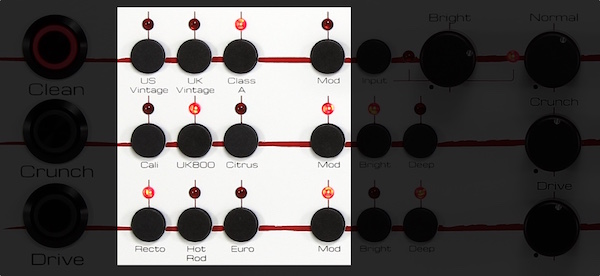
Of course, for some legal reasons we can understand, the MGP1A use different names, but here’s the list of the amp models they’re based on:
CLEAN:
US Vintage: Fender ’59 Bassman
US Vintage + Mod: Fender Deluxe
UK Vintage: Marshall JTM-45
UK Vintage + Mod: Marshall 1987 Plexi Super Lead
Class A: Vox AC-30
Class A + Mod: Vox AC-30 Top Boost
CRUNCH:
Cali: Mesa Boogie Mark IV Rhythm 1 / Fender Reverb
Cali + Mod: Mesa Boogie Mark IV Rhythm 2
UK800: Marshall JCM-800 2203/4
UK800 + Mod: Marshall JCM-900
Citrus: Orange Graphic Mk II
Citrus + Mod: Diezel VH4 Ch. 3
DRIVE:
Recto: Mesa Boogie Dual Rectifier Red / Soldano SLO-100
Recto + Mod: Splawn Nitro
Hot Rod: Marshall JCM-900 SL-X
Hot Rod + Mod: Bogner Ecstasy Red
Euro: Diezel Herbert Ch. 3
Euro + Mod: ENGL Powerball Ch. 4
I already know what you’re gonna say: “But that’s more than 18 amps, right?”
And you would be correct! How so?
As mentioned above, sometimes, from one amp to the other, only very few components change and therefore give a complete different tones. Let’s say we could have a gain that goes from 0 to 100 (it’s just some arbitrary numbers); we could have two amps that would have the exact same kind of circuits and still have different tones… because one would have a gain range that would go from 0 to 60 maybe, while the other would have a gain that would go from 40 to 90. So when you will set both amps with their gain at 12 o’clock, they wouldn’t react the same way, they wouldn’t have the exact same tone. And still, they will share the same base, same topology, same components, etc…
And then we can have this kind of differences on all other controls, such the EQ… or we can even have the exact same Preamp, but then with a different amp, different tubes, different transformer, etc… But many amps are inspired from others, just like the Marshall JTM-45 used the Fender Bassman as a starting point for the circuit… Mesa use the Soldano SLO-100 when they did the Dual Rectifier (and it was more than just an inspiration in that case).
So what does it mean for the BlackWidow MGP? It means, it not only have accurate models of 18 amps, but sometimes with just a slightly adjustment of the gain, EQ, or the tonal options, it can replicate other amps too. If you count all options such Bright/Deep, EQ Shift/Alt EQ and the Amp and Mod, we can have 264 different circuits.
Keep in mind, it’s NOT 264 Presets, it’s really 264 different amp circuits and topologies, allowing you to pretty much emulate any kind of amp on the market right now. Of course, I fully understand that we’re talking about Amps and the MGP-1A only recreate the Preamp part. This is absolutely true, but that’s also the best part of it because we can use it with any amp section of our choice (I’m gonna come back on that a little bit later).
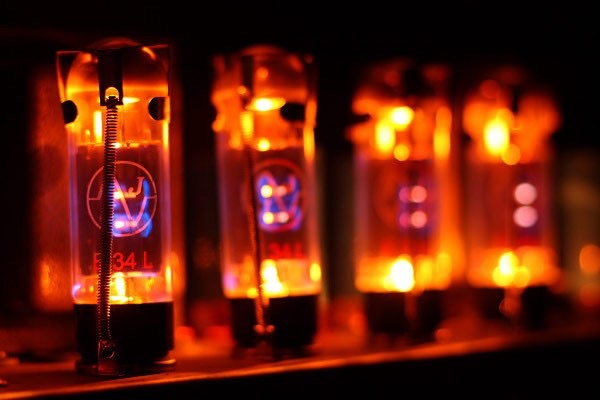
But, wouldn’t it be cool if Black Widow would come with a similar system for the Amp section with multiple tubes, circuits, bias, etc… to complete the MGP-1A? Well, I’ve been told they’re working on something. So I guess we’ll have to wait to see what they’re coming with. But now it completely makes sense the MGP-1A is a Preamp only — I can already imagine than once we would get the Preamp and Amp, both working in perfect synergy, we could pretty much model any amp models that ever existed.
It would make a great Power Amp to go with this MGP-1A… but it would also mean it would be the only gear you’d ever need to not only emulate any kind of famous amps (including both Preamps and Amps), but it would also allow you to try any kind of weird combinaison such having a Fender Blackface but with EL34 instead of 6L6, or a Marshall JCM800 with EL84 instead of EL34, etc…
If at first sight, all those possibilities look overwhelming to you, keep in mind, as explained previously, that all you have to do is to select a channel, an amp model (with mod or not) and then play with the gain, EQ and tone options like you would do with any amp. So it’s an easy unit to work with, but with a large potential with multiple amp models.
That’s exactly where the whole term “Modeler” takes all its sense. This is not “just a preamp”. And you could even have different models you can recall from either the footswitch or by MIDI. However, keep in mind that only the switches, channels, and tonal options could be recall by MIDI. Unfortunately, the settings of the knobs (gain and EQ) are not MIDI recallable (like it would be for instance on the H&K GrandMeister 40). This is one of the first thing I did ask to Black-Widow.
But Brian explained me well in detail that because it’s an accurate recreation of the real circuits, it will require high-voltage components, including for the knobs. And today, because there’s no high demand, no manufacturer are building the components that could be used for MIDI recall with high-voltage. So, there’s always solutions if it’s for a specific amps (such H&K probably does), by designing the amp with this feature in mind from the begining… but in that case, the circuit cannot be an accurate recreation of the famous amps such Fender, Marshall, Mesa, Soldano, Orange, Vox, Diezel, Bogner, etc… So we can’t have it both way to be both a perfect and accurate tube/analog recreation and then a modern take that would include MIDI control… mainly since MIDI is digital and would also bring some noise in the circuit.
So Black Widow did choose to have a better sound over this feature… and I don’t blame them. Because, let’s be honest, if we’re at home (or in studio), we have time to tweak it the way we want… but then once we have the tone we like, we generally use it and don’t touch much the settings… same thing with digital modelers. We can spend hours and hours to tweak them to get decent tones and then save them, but once it’s saved, we will pretty much just recall this couple of presets and play often the same ones. I’m know I’m guilty of that… we generally like to dial our amp to “our” taste and preferences… and that’s also why we generally always sound the same.
How does it sound?
Now that we reviewed how it looks and how it works with all kind of models we can get from the MGP-1A, the main question would be: But how does it sound?
An amp is not just a melting pot of components. If all we had to do to get an accurate recreation of an existing amp would be to follow the circuit schematics and put all components together, that would be too easy and any amp builder on earth would know how to make a great Fender Bassman, a great Marshall Plexi, or Vox AC30, etc…
It’s always more complicated than that — it’s all about finding what components to use and what will work great together, this synergy of components that will get you the alchemy we can find in most of the historical amps we love. But the more complex the amp becomes, the more difficult it is because it’s not just about combining different circuits together like LEGOs… again, that would be too simple. When an amp gets crowded and full of components, then space could become an issue, the need to respect distance between components to make sure no interference could happen, no safety issue could occur, etc… Making 1 single reissue amp could already be challenge, so imagine fitting 18 of them with 172 capacitors in a single 2U rack.
But the results pay off because the sound is really authentic — and you don’t have to take my words for it. You can not only listen some of the online demos, but also watch the nice live stream from The Tone King for his first steps with the unit. He did an Ultimate Rack shoot-out to compare the MGP-1A with other tube preamp racks such the Soldano, Mesa Boogie and ADA, and every single time the Black Widow sounded just as good, if not better.
When we consider that the Soldano preamp rack alone would generally cost just as much as the MGP-1A, it makes you think again about the Black Widow price when listed at $1,999. However, by using the coupon code TheToneKing, Back Widow is offering a special $100 off to the five first Tone King readers that would buy a unit. At $1,899 for 18 Preamps, it comes to only $105 per Preamp.
Just for fun, and to put things in perspective, we will compare it with other alternative solutions.
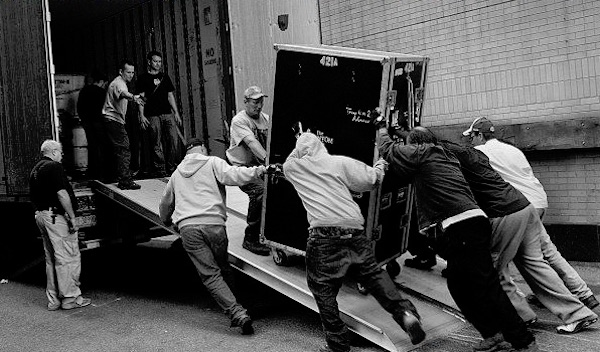
For instance, there’s some Rack Preamps out there, generally modeling 1 Amp — they can easily cost $499, $599 or even $699 each… And you would need to hire people to travel with your 18U Rack (minimum) to have 18 different Preamps, not even mentioning some switching system, cables, etc… I know there’s a huge trend to go back to the ‘80s right now, but the whole refrigerator size racks are no more.
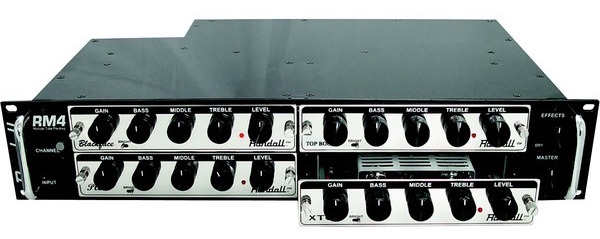
Another alternative is the Modular system such the Egnater, Randall, etc… where the Preamp are sold as modules that can be removed and inserted into a chassis. Again it was a nice idea back in the ‘80s, but it’s completely archaic today when we can have all modules inside a small unit and not have to unmount/remount each module every time we want to use them, and with the MGP-1A we can just recall a module by the single press of a button. But even if we put aside the archaic design, from a pure price point, the preamp modules alone are generally sold for $399 each. And you will also need to add the cost of a chassis… and of course there’s no chassis with 18 slots anyway. So even in that case, $399 is still almost 4 times more expensive than the $105 for the MGP-1A. For the price of 4 modules and a chassis, you could already afford to buy the MGP-1A that would provide you all tones and preamps.
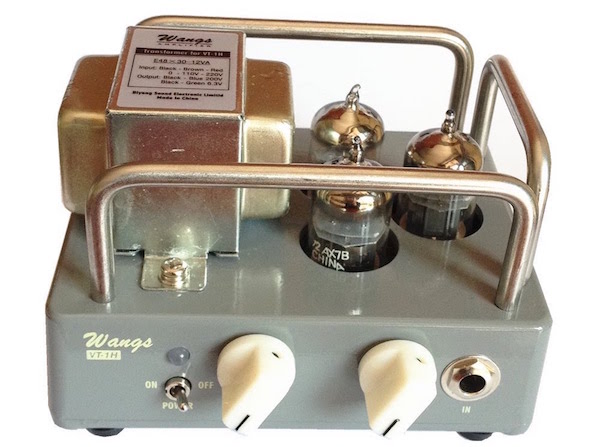
Even if we look at the lowest end of the spectrum with some tiny small head amps (generally Made in China). Most of the time, they don’t offer a lot of features, sometimes only include 1 or 2 tubes — even the best ones out there are trying to emulating only 1 type of Amp (Blues Junior, Orange, JCM, 5150, etc…). And let’s be honest, even if there’s always a use for this kind of amp, they’re not comparable to the MGP. But even if we put aside the tone and feature difference and only look from a price point, the average price for those mini amps is $150+ … which is still more than the $105 per preamp for the MGP-1A.
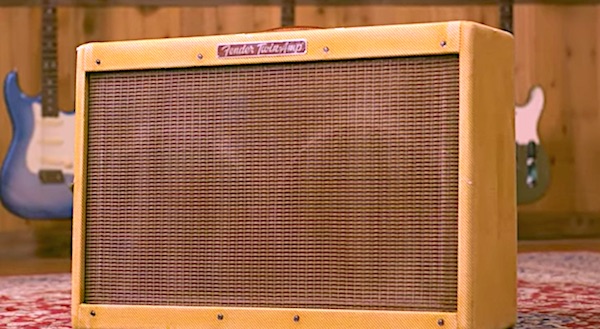 

But we could also compare them with some reissue amps, but I know what you’re gonna say: “But reissue amps are not just Preamps, they have an Amp section”… And you’d be entirely correct, once again! Except that most of reissue amps are also generally costing a lot more… and I don’t even mention the ones signed by some artist such Fender Joe Banamassa for $3,500.
At this price point, you can easily buy a MGP-1A and pick any amp of your choice. For instance, if you already have a nice amp, let’s say a Fender Blues Junior, Marshall DSL, etc… you can easily use the MGP-1A in the loop return and then add 3ch and 18 more Amp to your current rig. All you will need is an A/B switch. So let’s say you already own some Amp and you were thinking to save money to buy one of those high-end reissue amps… well, you can get 18 of them in a single box.
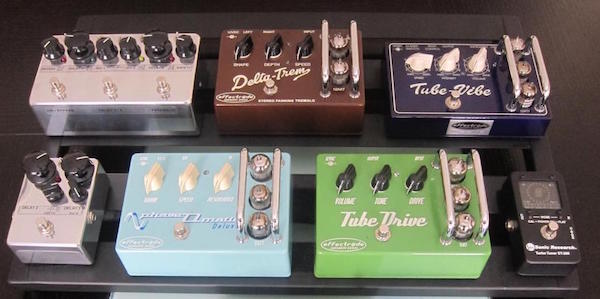
But we could also compare the MGP to pedals. Let’s say you have a nice clean amp that is pedal friendly and you don’t want to save for a high-end amp, but instead you want to build a large pedalboard with 5 or 6 boutique pedals dedicated to get you some specific tones: let’s a say some Fender blackface, Vox AC, Orange, JCM, 5150 and some high gain such Bogner, Diezel, etc… I’m pretty sure you already saw those pedals and maybe even consider them. But some of those pedals could easily cost $250 each (if not more); times 6, it will already be $1,500 not counting switching, cable, power supply, etc… so at $1,899, once again, the Black Widow is looking pretty good.
The MGP is not just an approximative tones, it’s the real tones using real tubes — something you generally don’t have in pedals of that type; there’s some pedals with Tubes, but most of the time that’s still not entire comparable to a real preamp. When pedals are comparable to preamps, they generally are more expensive in the $400-$500 price range.
Also, it doesn’t always guarantee they would be just like a real preamp — so if you’re asking yourself right now: Are pedals with tubes the same as tube preamps? You can learn about it by reading the nice and detailed article Brian wrote for TheToneKing.com to answer this particular question.
Of course, pedals have the advantage they can be bought step by step… but if we look at the big picture, it will cost you just as much, won’t sound just as good, and won’t provide you 18 Amps with 264 potential circuits.
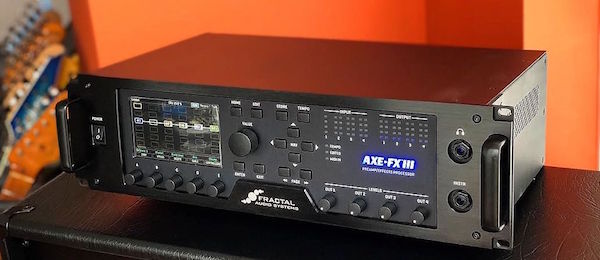
But that’s not the only kind of use. For instance, even if it’s not really comparable, we could still compare the MGP-1A with some digital modeler such the Fractal Axe-FX III or Kemper, etc… Again, you’re gonna say: “But digital modelers have effects, IR Cabs, etc…”, and again, you’d be entirely right, so just bare with me.
You could easily buy, let’s say a Line 6 HX Effects, and add it to the MGP-1A and then use both effects pre and post amp, and include some IR Cabs, all controlled in MIDI by the HX Effects. You would get the benefit of having digital flexibility with the pure analog and tube tones from the Black Widow. So even if you add the $600 of the HX Effects to the $1,899 of the Black Widow, it’s not that far stretched from the cost of an Axe-FX III.
There’s no reason why Analog and Digital couldn’t work together and couldn’t be used for what they can do best. If you already use some older modelers (such an older Axe-FX, maybe a Pod HD500, TC G-Major, etc…) and the amp emulation might be the weak part, you could easily insert the MGP-1A to bring some real tube tones for the preamp and therefore “warm up” the whole digital rig.
If you’re doing some home recording, you might use a Two-Notes Torpedo or other Amp/Cab emulation and therefore plug the MGP-1A directly to it and play with studio monitors.
There’s really a lot of ways you can use a Preamp these days. I have no doubt, it would open the door even more if Black Widow would ever bring a “Power Amp” that would go with the MGP-1A. But let’s also not forget there’s plenty of power rack on Reverb/eBay such the Marshall 20-20, 50-50, Mesa Boogie 2:Fifty, etc… Some of them could be found at a very low price.
So regardless if we compare it to accurate reissue amps, to preamp racks, to modular system, to pedal, cheap Chinese mini amps or even some digital modelers, the Black Widow have it all. That’s why I such a fan of it, and I’m not the only one.


But if you’re like me, when you see something that is too good to be true, you might get suspicious and then you’ll ask yourself: “But how is even possible then?” Well, that was one of the question I openly asked to Brian Rois from Black Widow. His answer really surprised me… in a good way.
I’m paraphrasing his words here, but Brian wanted to build quality preamps. There’s always a way to cut corners and make it cheap by not using the best components, having it built oversea, etc… But that’s not what he wanted since he wanted quality components, built in the USA. So he knew from the very beginning that if he would make a business like most of amp builders right now, it would have a product that wouldn’t find any customer because it would be way too expensive.
When we see an amp with 23 capacitors being sold for $2,500+, a MGP-1A with 172 capacitors and 18 Amp models should be sold in the $10k if it would be priced on a proportional scale. Even at a low cost, if the MGP-1A would be sold through dealers, etc… it would easily be twice the price it is right now. That’s why Black Widow embraced the modern world and the fact we can all communicate through internet, we can pass order by a wire transfer, paypal, etc… and that we can get a product shipped anywhere in the world by using transport services. So like many other companies in this connected world, Black Widow decided to cut the middle man/men and sell direct, not to make more margin, but to be able to sell at Dealer prices directly to the customer to make the MGP-1A more available to anyone. That’s how they can get a cost of $105 per preamp while others will have prices of $150, $399 or even $599 per preamp.
One of the reasons I was surprised is because a lot of time manufacturers decide to sell direct to have more margin — but when we have some ideas of the production cost and when we look at what is in the MGP-1A, the whole R&D to get it done, etc… I have no doubt they don’t sell direct for bigger margin. Otherwise, from my guesstimation, they would have to sell it for at least $2,790-$2,890 minimum… and as crazy as it can seem, it would still be worth because it would be only $160 per preamp.
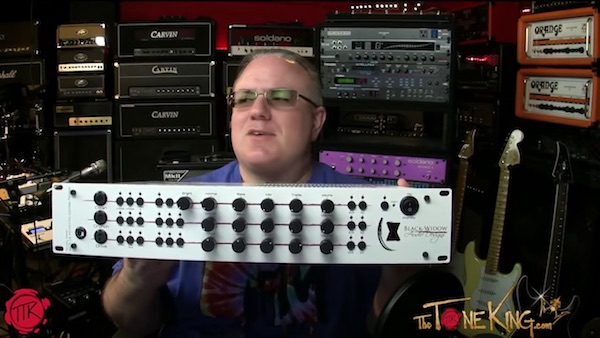
One question you might ask yourself now: Is the Black Widow MGP-1A for me?
If you’re only interested to buy a single amp because that’s all you need, the MGP-1A is not for you. In that case, even a $699 Rack will be a better deal. However, if you want to have 2 or 3 different tones to add to your rig or amp collection (such the basic Fender Clean, Marshall Drive and High-Gain Lead), or if you want to have a large palet of tones to provide you virtually all tones on earth, then the MGP-1A is definitely for you because it quickly becomes more interesting than any other solutions out there.
If you think you don’t need a large palet of tones, here’s just a thought for you: This is not about having millions of thousands of gazillions tones at the time… I know more is more, but this is not about that. This is also about being future-proof to changes and evolutions.
This is for the cases where you might change bands and then your current amps is not what you need anymore… how many time some of you had to sell an amp to buy another one to fit the new “needs” for the new band? Or maybe it’s about some gear compatibility — sometimes we think about some gear and we just think it’s gonna work PERFECTLY all together until we actually try and then it’s no good. So we wish we would still have a previous amp we sold because we realize it was actually the good one for that.
Maybe it’s about to change tones when you’re creating new song in studio to not always have the same tones for each albums, but instead try something new and different to give a new direction for the new album — or also to save you a tone of time in studio to switch between different amps to find the right tone for the track. It’s many cases like that where having a way to use something different by the simple press of a button could be useful.
It’s about investing in something that will last because you won’t have to wait on a firmware update to get what you want, or fear your product will become obsolete at the next updates (all in purpose to get you a good model of a tube amp). Well, here it’s a tube preamp with a full analog path, so it doesn’t get any better than that. If you can bored and tired of your tone, you don’t need to sell anything, you can just change for another one by selecting another one of the 264 different circuits.
If you have more than one band at the time, then it’s even better, you don’t have to have more than one rig — you can have one rig to rules them all.
For those kind of uses, generally digital is great, and that’s why we saw a lot of Fractal, Kemper, Helix on stage lately. But Modelers don’t have to be digital and the MGP-1A can cover the whole Analog Tube Preamp part of it by keeping some similar features we like from digital such flexbility, midi control, etc…
Conclusion
After reading this whole article, I’m pretty sure you will understand now how and why I felt in love with this Black Widow MGP-1A. Who wouldn’t when we see all possibilities? Regardless if we want to use it as a preamp with an existing amp, for direct recording, with an older digital modeler or in any othr different ways. Once we really see the whole potential of it and the price point in real situation comparison, it’s a real winner and completely unbeatable.
Amongst the PRO points, we have also to mention it’s made in St. Louis, MO (USA) — it’s a real tubes preamp with Four (4)12AX7 tubes with a full analog path from input to output. The only digital part would be the relays to recall settings by MIDI. Of course, I also like the very easy frontpanel with a “one feature per control” with no menu, sub-menus and hidden features like we can generally find on digital racks and modelers. And finally, there’s one thing that is hard to describe and needs to be heard, but the Black Widow sounds “large and real”, and not “small and fake”. When you compare a Soldano tone with a Soldano preamp rack… it sounds like a Soldano. And then if you switch to a Fender Bassman, it won’t sound like a Soldano trying to sound like a Bassman, it will sound just like a Fender Bassman — and that would be true for the 264 circuits we can get with the MGP-1A, including the 18 accurate reissue Preamps. And yes, it’s a Preamp and it could be seen as a Pro points, mainly if we want to use it with an amp of our choice or direct… or what knows what they will come next?
However, the fact it’s “just” a preamp, it could also be seen as amongst the CON points — mainly for the one that want a “all-in-one” solution, or doesn’t have anything else, or doesn’t want to search for anything else, etc… I’m not sure how long it will really be an issue, because even if it would be another 1,500-2,000 bucks for an Amp (which could surely gives you one hell of a nice quality amp for this price), it would make a total of 4 grand for a complete system that could pretty much get you all tones you will ever need in your lifetime. There’s a lot of boutique amps that cost just as much and barely offer 2 or 3 channels and no recall at all… So I understand the “Preamp only” could be seen as an issue for some people ou there (and that’s why I want to be fair and mention it), but I think it’s quite minimal once we put things in perspective.
Same thing with the MIDI that don’t recall knobs position… I would be the first one to jump all over if we could have both 100% accurate circuits and then digital to have total recall on every settings, not just the switches and channels and tonal options, but also the knobs of gain, EQ and volume. I would find that awesome. But as I’ve been told, it would require the whole industry to have a demand for such kind of potentiometers that could be use for both high-voltage tube circuits and digital recall. And unfortunately, there’s no demand and therefore there’s no available parts. Again, I’m heavily paraphrasing here and probably even butchering the whole technical explication, but we will probably have a way to provide for The Tone King readers a more accurate and technical explications soon.
Amongst the CON points, I would mention the name: MGP-1A… to me, it doesn’t really look like the most attractive name out there, it looks like an Ibanez name. I know it’s totally subjective and it doesn’t change much about the product itself.
For the dimensions, it’s 19 in (48.3 cm) Wide, 3½ in (8.7 cm) High and 14 in (35.5 cm) Deep — and weights 20½ lbs (9.3 kg). It doesn’t have any “fx loop”… because it’s a Preamp only. The FX Loop is between the Preamp and the Amp, so if you want to use effects, you can just place them between the MGP-1A Output and the Amp Input.
Finally, in conclusion, if you’re asking yourself: “How is that any different from the Joyo Dual-Klonz?”
I’d say they’re definitely in the same “category”, but they’re not the same products and don’t share the exact same technical approach. It’s not a question of better or worse, it’s just two different ways to approach digitally controlled flexible modular reconfigurable analog tube preamps/amps. However, one sure thing is that they’re both looking to what Preamps/Amps should be in 2018, with a very forward thinking to keep what we like from Tubes and Analog path signals, but improving them by including digital features to control and have more options, all accessible by the press of a button or a footswitch.
For more information, go to: hearblackwidow.com
Tiny URL for this post:
Filed Under: Featured • News • Commentary / Editorials
About the Author: French by birth but Texan by heart, I had different careers in multiple areas that don’t really make sense when they’re all laid down on my resume. Amongst them I’m a former military officer (mainly confidential stuff I can’t talk about) — I’m a former network architect (the stuff with switches, routers, optical fibers, satellites and wireless things that allow people to be connected) — I’m a former R&D engineer and product designer (mainly for electronics instruments in the Music Industry) — I’m also a former sound engineer that worked in professional recording studios (but nobody cares about that anymore) — and I even thought once in my life I was someone almost important doing things almost awesome... Now I’m just a professional amateur spreading my 2 cents online about anything and everything to anyone with too much time in their hands — and if you’re reading this bio, you might be one of them that just wasted 2mn of your life you will never get back. Sorry...


















